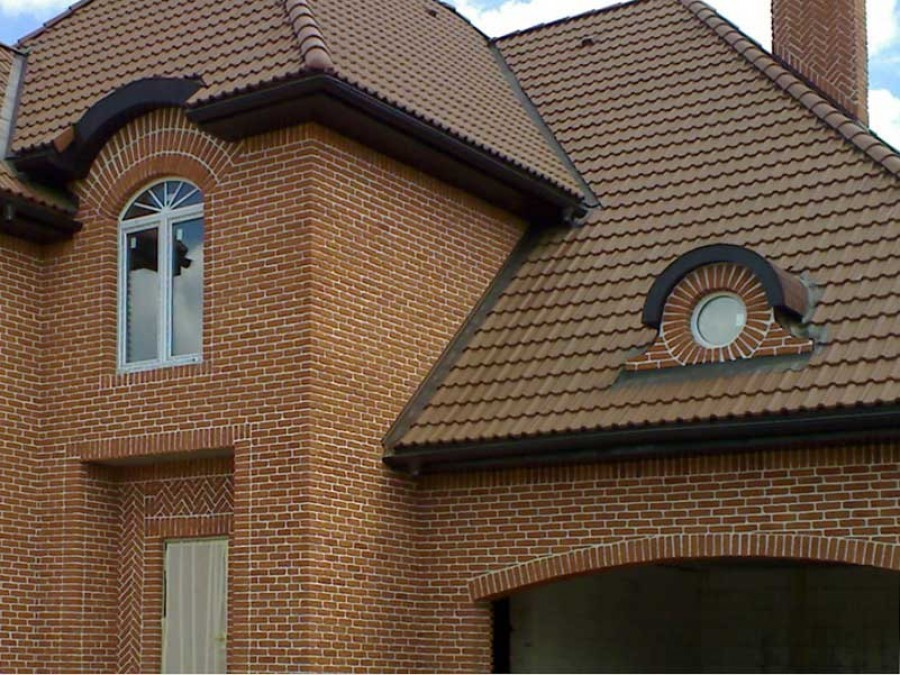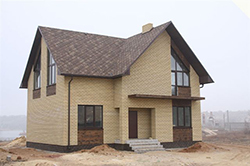 The external finishing of the facade of brick houses, as a rule, is the final stage of all construction work carried out. The cladding allows you to give a finished and as neat look.
The external finishing of the facade of brick houses, as a rule, is the final stage of all construction work carried out. The cladding allows you to give a finished and as neat look.
This type of brick is weather-resistant, frost-resistant and has a decent appearance. The decoration of a building, built of facing or finishing bricks, most often consists in the design of the slopes of window and door openings, as well as plastering or cladding of the basement of the building.
Features of finishing a brick building
If a simple brick was used during the construction of the house, then the facade of such a structure will definitely need to be finished. Not only is the appearance of such a building unattractive and unpresentable, but also the quality characteristics leave much to be desired.
Houses built using silicate bricks require the most attention. This type of building material is absolutely unsuitable for outdoor work, due to its high ability to absorb excess moisture.
The most common option for decorating a house made of building or sand-lime bricks is to plaster the facade with subsequent painting. In addition, plastering the facade of a house can be quite easily combined with other finishes, using, for example, natural or artificial stone, as well as porcelain stoneware or other modern finishing materials.
Decorative finishing options
The brick façade is almost ideal for finishing. For cladding the facade of a brick house, you can use a variety of options:
- any;
- decorative;
- corrugated board;
- sandwich panels.
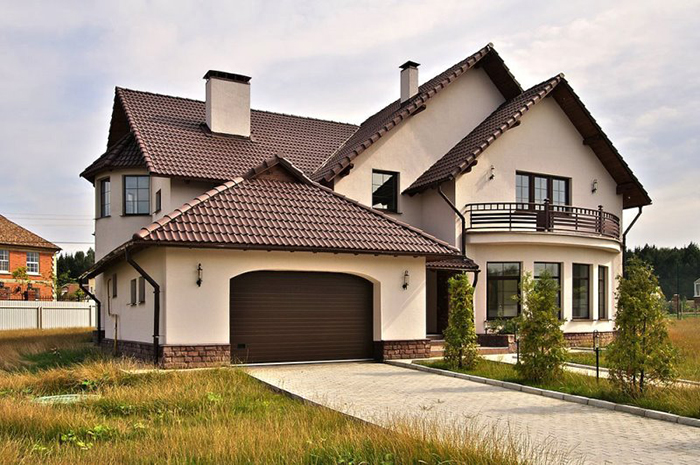
Decorative plaster
Regardless of the type of facade surface and the type of material used for the construction of the walls, the plaster finishing technology is almost the same in all cases. However, there are some nuances to keep in mind:
- the facade of a building based on brickwork must be cleaned before finishing;
- before plastering is applied, it is required to moisten the wall surfaces using a spray gun or a wide paint brush;
- all the seams located between the bricks in the masonry should be cut down, observing a depth of one and a half centimeters, which will make the adhesion of the plaster layer to the base as reliable and high-quality as possible;
- if it is supposed to apply a thick plaster layer, then it is imperative to set special guides in the form of beacons on the level;
- the application of decorative plaster is carried out according to the standard technology, and the plaster layer is leveled from the bottom up with a special plastering rule;
- the finishing plaster should only be applied after the main plaster coat is completely dry.
Remember: in order to obtain the highest quality adhesion of the plaster mixture to the wall surface, a special plaster mesh should be used. This mesh should be placed on top of the wall to be treated and secured with dowels. 
Ventilated facades
Quite often, the need for exterior decoration is associated with construction work. Such work is usually carried out on older buildings. Recently, however, the owners of new buildings also often carry out external insulation of houses with subsequent finishing.
If it is supposed to carry out external insulation, then any version of sheet insulation should be strengthened on the wall surface. As a further finish, plastering of walls on a reinforcing mesh or a so-called device can be used.
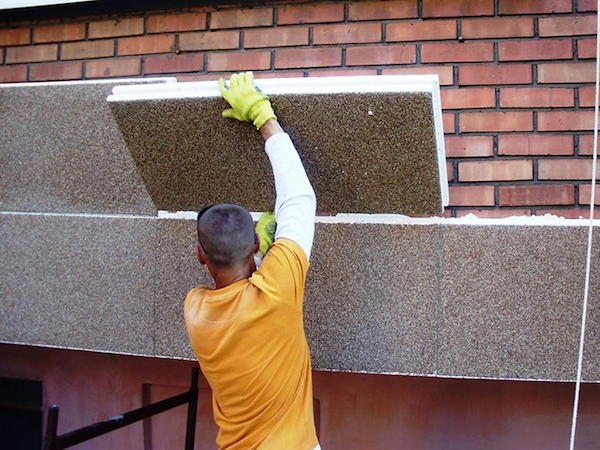
The materials for creating ventilated facades are:
- facade cassettes;
- composite;
- porcelain stoneware;
- profiled flooring.
Insulation of the facade of a brick house (video)
Facing brick
Modern high-quality brick is not only an ideal material for capital construction, but is also widely used for finishing the facades of buildings. Stylish and bright facades based on facing bricks are characterized by beauty and durability.
Such a facade finish is easy to arrange and reliable, and also has a high degree of resistance to moisture and mechanical impact. In many respects, facing brick is superior to similar materials.
Currently, several types of facing bricks are produced, which differ not only in composition, but also in size and shape.
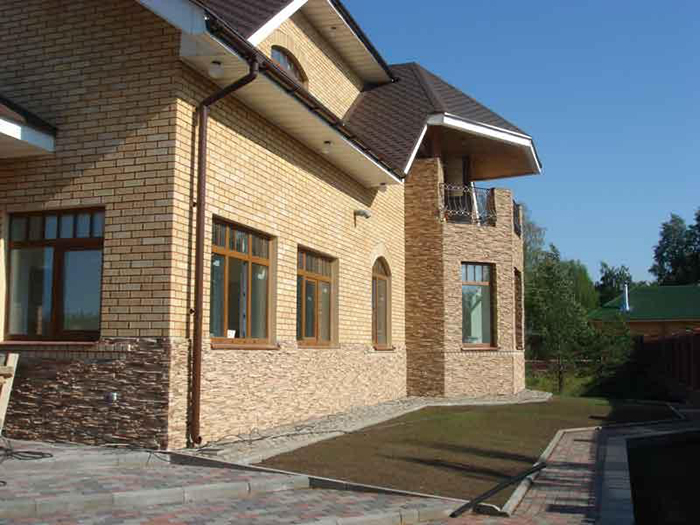
Hyper-pressed facing brick
This brick option is one of the leaders among the materials for finishing brick buildings. Various shapes and a wide range of colors are able to satisfy the most demanding consumers.
Semi-dry cement mixtures, as well as lime and crushed stone, are used as raw materials in the manufacture of this type of brick. When the feedstock is exposed to high pressure, it turns out to produce a kind of "welding" of all the constituent components.
As a result, a finishing material with high strength and reliability is formed. A smooth version of such a brick has parameters of 25 x 12 x 6.5 cm. Facing bricks with a stone-like texture can be somewhat shorter. In addition, bricks of the "American" type with dimensions of 25 x 6 x 6.5 cm are popular.
Ceramic cladding brick
The technological process for creating bricks of this type is much more complicated and is characterized by high time and energy costs, including very precise adherence to temperature conditions during the firing process. Ceramic bricks have internal voids or through holes, which lighten the weight of the structure and give the cladding additional heat-insulating qualities. The shapes and sizes of such voids are different.
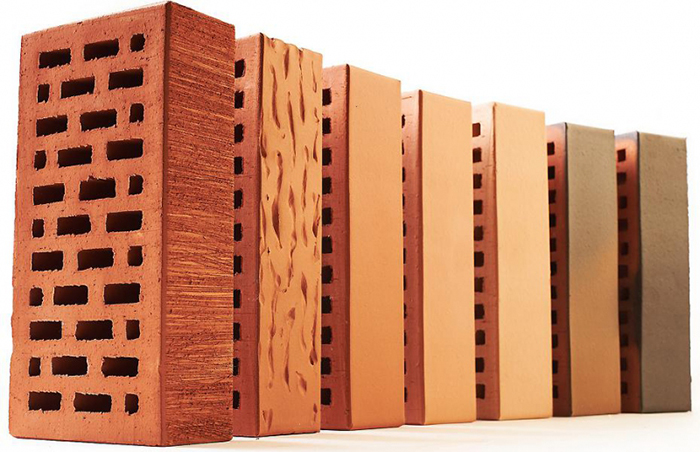
The decoration of a brick facade can be varied: from plastering to facing with the appropriate type of brick. Its implementation is the final stage of all construction work, as well as work on external insulation. Finishing provides the building with an attractive and aesthetic appearance.
Cladding a brick house with siding (video)

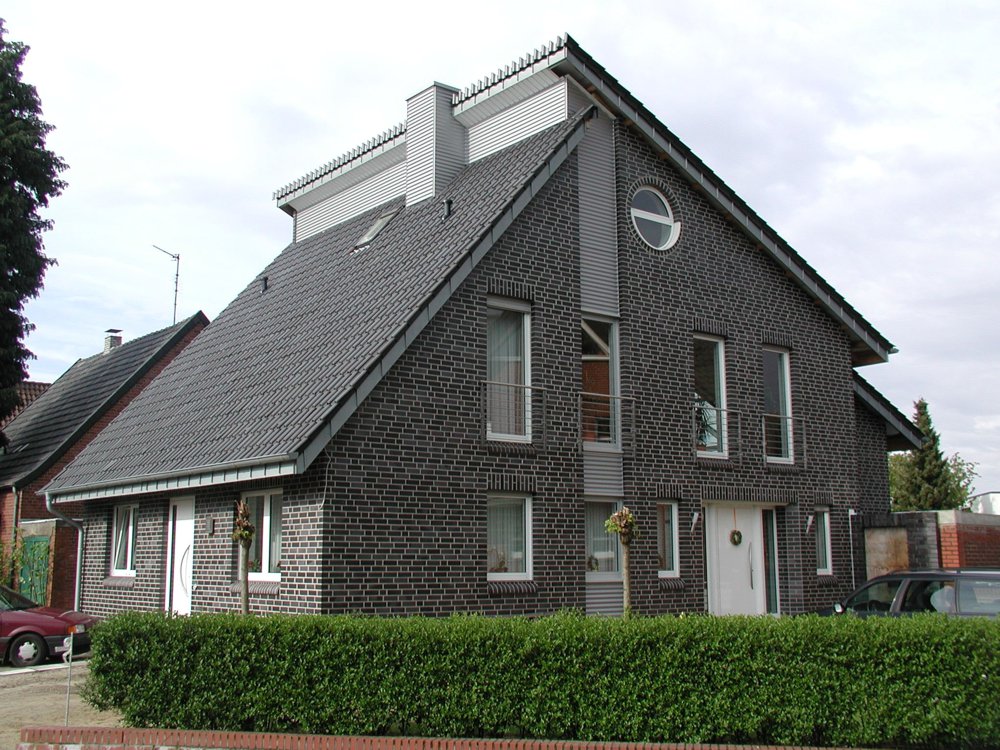
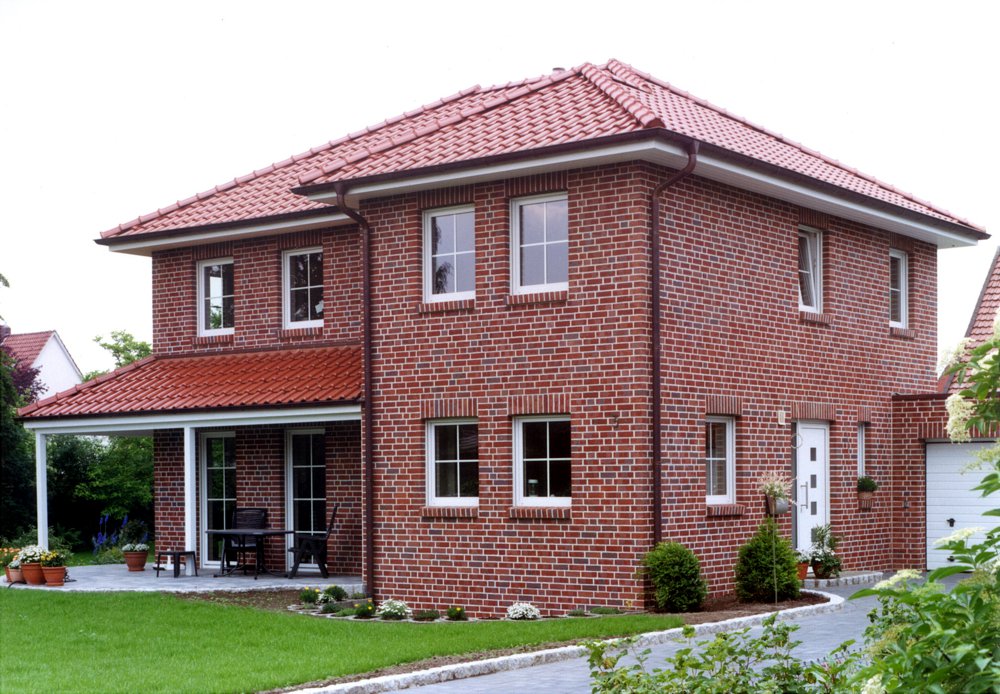

![]()
